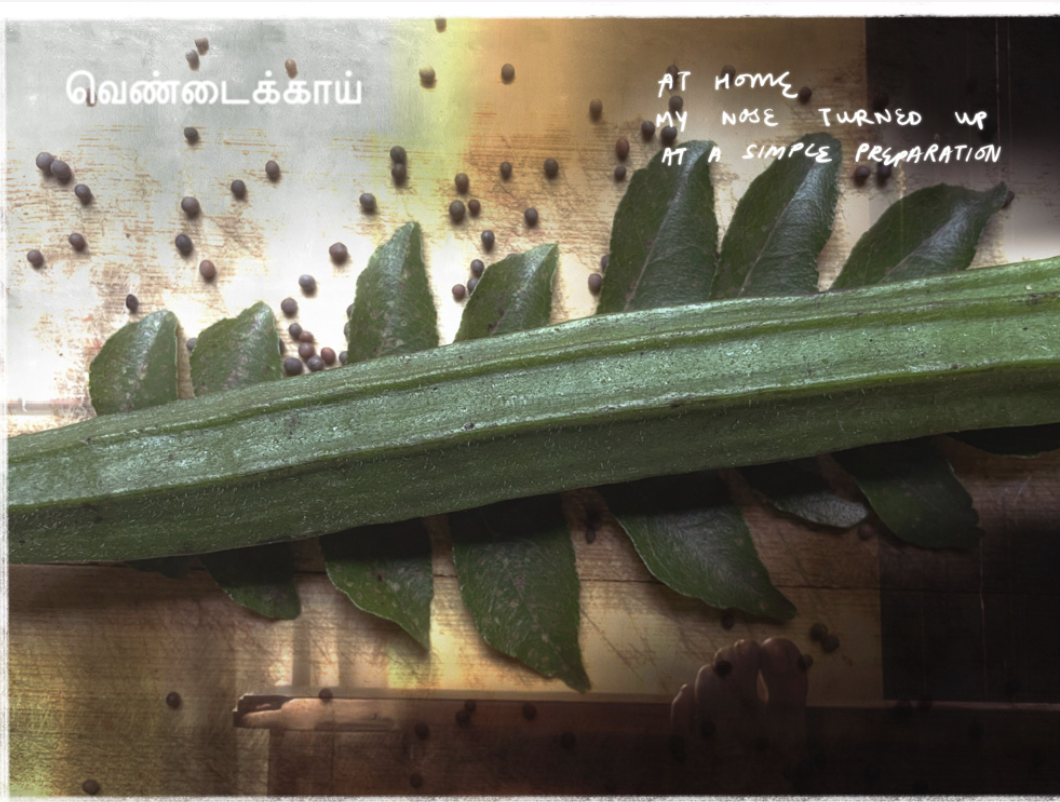Okra – From Roots to Table
03 January 2023
Words By Nikhita Venugopal . Artwork by Lal Poster
Listen to this story. Narrated by Nikhita Venugopal.

The clouds that had gathered over the Chennai sky turned an ominous grey, an enduring sign that the monsoons were about to begin in full force. But before the downpour on that balmy evening in July, my grandmother and I walked through her front yard. While her two dogs raced around us, she pointed out additions to her ever-growing vegetable garden, some withering after bountiful months and others ready to spring anew. Egg-shaped white brinjals weighing on thin branches, pots of deep, verdant green coriander stems, a slim moringa tree dotted with delicate white flowers. But amid all that, one plant caught my attention. Familiar and unfamiliar at the same time, cylindrical tapering pods pointed up towards the sky from a bright green stalk, ready to be washed by the rain. The pods were soft to the touch, with a fine coating of delicate white fibre.

In Tamilzh, we call these pods vendakkai, though it is known by several other names in different languages, including okra, bhindi and lady’s finger.
It occurred to me that I hadn’t ever seen the plant up close before. Even to my own ears, the thought sounded absurd; a vegetable so deeply rooted in the kitchens of Indian families, and yet I had never imagined it rooted to the ground.
It is an unfortunate fact that lady’s fingers often get a bad rap. They’re either too slimy, too squishy, too soggy or taste like nothing. “As a kid in India, I hated bhindi”, a chef once told me, and he’s not the only one. Children in India have always had a distaste for okra. Beneath the angled exterior of the pods, its star-shaped insides hold numerous tiny seeds and a sticky substance called mucilage that can graciously be described as unpleasant (though okra aficionados will vehemently disagree). At home, my nose turned up at a simple preparation of lady’s fingers with curry leaves and mustard seeds.

Lal Poster
Lal Poster (or Gulal Salil) is a writer and graphic artist with roots in anthropology and poetry. Gulal's education, work and practice lies at an intersection of, though not exclusively: news media, visual communication design & art, poems and ethnographic research. He/they are a queer, androgynous person from Bhopal, and are currently based in Goa.

Nikhita Venugopal
Nikhita Venugopal is a freelance food and culture journalist based in Bangalore.
Comments (0)
